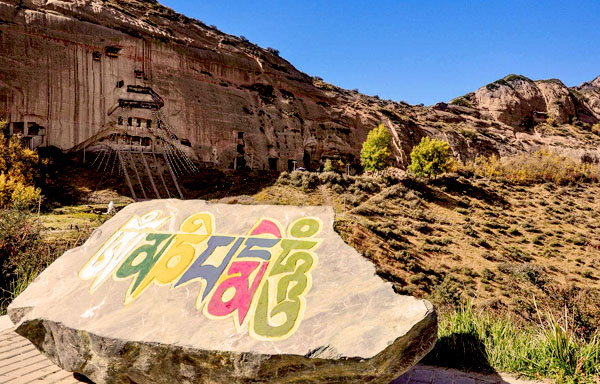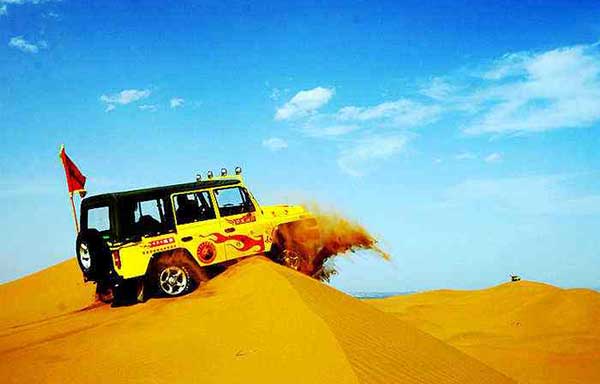- By admin
- In SilkRoadKnowledge
- 2016-06-07
Businessman on the silk road
Compared with other categories of Silk Road travelers such as the generals, envoys, and friendship princesses, businessmen have been much less frequently mentioned in the official history records of successive Chinese dynasties (perhaps, due to the traditional Chinese cultural prejudice against commerce in favor of agriculture). Yet, the Silk Road was more of a system of trade routes, trade being the primary activities, and taken collectively, the merchants consisted the most fundamental groups of travelers on the Silk Road.
Standing at both ends of the Silk Road were the cities of Chang’an (present-day Xi'an) and Rome. Merchants from the Roman Empire were hardly seen in Chang’an, and no Chinese businessmen were recorded to be ever seen on a Roman street. The Silk Road has been too long for an ancient man to cover the entire length easily. Instead, trade was indirect, as goods were passed from one trader to another in short segments until they found themselves on the market of Chang’an or Rome.
The Central & Western Asian peoples that happened to reside along the middle sections of the Silk Road took the geographical advantage and dominated East-West trade. The Sogdians, the Turks, the Persians, and the Arabs were among the most successful groups of businessmen on the Silk Road. The Sogdians from Samarkand, in particular, were dominant in Central Asia, its language becoming the lingua franca on the Silk Road.
Trading along the Silk Road used to mean a plethora of hardships and uncertainties. The vast inland regions of Central Asia have been extremely dry with extremely low rainfall. Deserts occupy a rather large area: the Taklimakan in Xinjiang, the Karakum east of the Caspian, and the Kavir in Iran. Mountain ranges stretch around the Pamirs: the Himalayas, the Kunlun, the Karakoram, the Tianshan, the Altay, the Hindu Kush, etc. These are further compounded by the crisscrossing Yardang geological landscape everywhere, namely large areas of soft, poorly consolidated rock and bedrock surfaces that have been extensively grooved, fluted, and pitted by wind erosion, adding to the challenges of traveling.
Aside from climate and geographical conditions, security was a bigger concern for merchants passing the regions. As much of the area was sparsely populated, gangs of robbers and bandits lurked in ambush and would assault the merchant caravans at any instant. One mural in Mogao Grottoes illustrates such a circumstance of a caravan praying for Buddha’s blessings in the face of the bandits.
Camel caravans are the most common images that Silk Road conjures up. A caravan varied from dozens to hundreds of camels, depending on the size of the caravan, that were typically roped together head to tail. The caravan leader often rode or even slept on the first camel, a bell being tied to the last camel in the line. As the commerce trip often traversed the spheres of influence of various rulers, the caravan was usually a mixed team of different ethnicities, which were expected to be of some help when it comes to dealing with public relations. Horse-mounted, armed guards, either temporarily engaged by, or as permanent members of, the caravan are recognizable in certain murals. Many caravans also included a monk, who was to provide spiritual comfort to the team during the arduous trip. In fact, it was a common practice for a missionary to join a caravan for his travel.
Popular destinations for the caravans were Bactria, Samarkand, Kashgar, Loulan, Dunhuang, Wuwei, etc, all of which were bustling centres of trade and transshipment. Settlements were established by the traders at these places. Wuwei, for instance, used to be a base camp for the Sogdian merchants from where teams of traders would be dispatched to inland China regions.
In the Tang China capital Chang’an, traces of cultural influence by the foreign merchants were abundant. One section of the city called “Western Market” (西市 xishi) was a fashionable hangout for the Chinese. Sogdians, Turks, Persians, Arabs, and other peoples of Central & Western Asia crowded the “Western Market”, and traded and sold their goods at numerous bazaars. Rare plants, spices, medicines, cotton, gold, silver, precious stones, glass, ivory, jade, wool, etc, were popular imports for the Chinese. In this commercial center, foreign traders dominated the trading of jewelry, spices and herbs, and profited handsomely. And out in the market streets, performers entertained the audiences with Western dancing and acrobatics, and Western taverns served exotic wines and foods, as is often depicted in Tang Dynasty poetry.
Standing at both ends of the Silk Road were the cities of Chang’an (present-day Xi'an) and Rome. Merchants from the Roman Empire were hardly seen in Chang’an, and no Chinese businessmen were recorded to be ever seen on a Roman street. The Silk Road has been too long for an ancient man to cover the entire length easily. Instead, trade was indirect, as goods were passed from one trader to another in short segments until they found themselves on the market of Chang’an or Rome.
The Central & Western Asian peoples that happened to reside along the middle sections of the Silk Road took the geographical advantage and dominated East-West trade. The Sogdians, the Turks, the Persians, and the Arabs were among the most successful groups of businessmen on the Silk Road. The Sogdians from Samarkand, in particular, were dominant in Central Asia, its language becoming the lingua franca on the Silk Road.
Trading along the Silk Road used to mean a plethora of hardships and uncertainties. The vast inland regions of Central Asia have been extremely dry with extremely low rainfall. Deserts occupy a rather large area: the Taklimakan in Xinjiang, the Karakum east of the Caspian, and the Kavir in Iran. Mountain ranges stretch around the Pamirs: the Himalayas, the Kunlun, the Karakoram, the Tianshan, the Altay, the Hindu Kush, etc. These are further compounded by the crisscrossing Yardang geological landscape everywhere, namely large areas of soft, poorly consolidated rock and bedrock surfaces that have been extensively grooved, fluted, and pitted by wind erosion, adding to the challenges of traveling.
Aside from climate and geographical conditions, security was a bigger concern for merchants passing the regions. As much of the area was sparsely populated, gangs of robbers and bandits lurked in ambush and would assault the merchant caravans at any instant. One mural in Mogao Grottoes illustrates such a circumstance of a caravan praying for Buddha’s blessings in the face of the bandits.
Camel caravans are the most common images that Silk Road conjures up. A caravan varied from dozens to hundreds of camels, depending on the size of the caravan, that were typically roped together head to tail. The caravan leader often rode or even slept on the first camel, a bell being tied to the last camel in the line. As the commerce trip often traversed the spheres of influence of various rulers, the caravan was usually a mixed team of different ethnicities, which were expected to be of some help when it comes to dealing with public relations. Horse-mounted, armed guards, either temporarily engaged by, or as permanent members of, the caravan are recognizable in certain murals. Many caravans also included a monk, who was to provide spiritual comfort to the team during the arduous trip. In fact, it was a common practice for a missionary to join a caravan for his travel.
Popular destinations for the caravans were Bactria, Samarkand, Kashgar, Loulan, Dunhuang, Wuwei, etc, all of which were bustling centres of trade and transshipment. Settlements were established by the traders at these places. Wuwei, for instance, used to be a base camp for the Sogdian merchants from where teams of traders would be dispatched to inland China regions.
In the Tang China capital Chang’an, traces of cultural influence by the foreign merchants were abundant. One section of the city called “Western Market” (西市 xishi) was a fashionable hangout for the Chinese. Sogdians, Turks, Persians, Arabs, and other peoples of Central & Western Asia crowded the “Western Market”, and traded and sold their goods at numerous bazaars. Rare plants, spices, medicines, cotton, gold, silver, precious stones, glass, ivory, jade, wool, etc, were popular imports for the Chinese. In this commercial center, foreign traders dominated the trading of jewelry, spices and herbs, and profited handsomely. And out in the market streets, performers entertained the audiences with Western dancing and acrobatics, and Western taverns served exotic wines and foods, as is often depicted in Tang Dynasty poetry.
0
Why Choose Us?
We are the top Silk Road tour operator based in Dunhuang, China. We focus on providing well designed Silk Road China Tours with resonable price and thoughtful service.
- Easy & carefree booking
- The best value
- Great travel experience
- Locally operated
Hot Tours
-

6 days Gansu tour to Binglingsi, Xiahe and Langmusi
Tour type : Private tour Price : from *** Destinations : Lanzhou - linxia - Xiahe - Langmusi - Hezuo - Lanzhou -

12 Days Gansu Highlights Tour
Tour type : Private tour Price : from *** Destinations : Xian – Tianshui – Lanzhou – Xiahe – Langmusi – Hezuo – Zhangye – Jiayuguan - Dunhuang -

10 Days Silk Road Classic Tour
Tour type : Private tour Price : from *** Destinations : Xian - Zhangye - Jiayuguan - Dunhuang - Turpan - Urumqi -

5 Days Zhangye - Alxa youqi Highlights Tour
Tour type : Private Tour Price : from *** Destinations : Zhangye - Alax youqi - Zhangye

